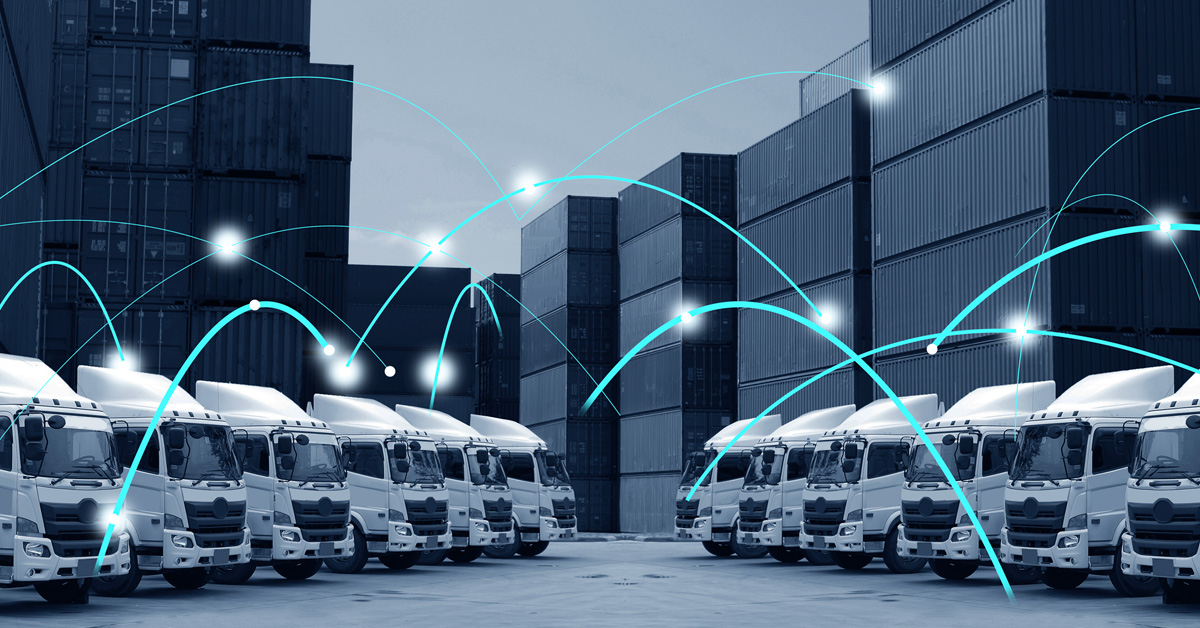DIGITAL SOLUTIONS
Improving safety and efficiency in truck transport with IoT technologies
IoT technologies first began to be adopted by the truck transport industry in the last decade and have since become ubiquitous. The use of connected sensors and devices in trucks to capture data about different aspects of transport, such as geographic location or temperature, has resulted in the real-time access to tracking information appreciated and now considered standard by both businesses and end customers as well as major improvements in freight monitoring and safety.
January 3, 2022

From real-time tracking to freight monitoring
The first application of IoT technologies in the truck industry was geographic positioning and tracking for transport companies, who need to know the location of each truck for more efficient planning and to provide improved service to their business clients. As tracking systems matured, access was also opened to end customers, allowing them to track their packages across different touchpoints and see when they would arrive, sometimes even to the hour.
The next key application of IoT technologies was real-time monitoring of the environmental conditions of the goods being transported by installing sensors in trucks. Sensitive freight, such as frozen foods and medical goods, must be kept within a certain temperature range for the whole transport chain to ensure their safety, and in the case of medical goods like vaccines, their efficacy. Sensors within the trucks collect data on conditions such as temperature and humidity and provide the driver with a warning if there is a problem, allowing them to react immediately. This ensures that any issue can be addressed and resolved before it has a negative impact on the transported goods. The whole stock control process is documented and can be accessed for years afterwards, ensuring that correct transport conditions were met.
Improved driver safety and supervision
IoT applications not only exist to monitor freight but also to improve the overall safety of truck transport. A now mandatory feature of modern truck transport across Europe is the digital tachograph, which records driving details such as the distance travelled, time and speed to ensure that drivers are following rules on rest and driving time. In the past, drivers would record this information manually on paper, however thanks to IoT-based digital tachographs, this has become automatic and fully transparent, allowing managers to supervise their drivers based on reliable, real-time data. This has led to improved road safety and fewer accidents caused by fatigue or speeding, as well as better working conditions for drivers.
IoT technologies also contribute to better safety through products that collect data on the physical condition of trucks, including the engine and tires. Sensors in the engine predict required maintenance, allowing trucks to reliably travel from A to B without breakdowns. New products also exist to predict how long the tires can run based on AI algorithms using the load of a truck in combination with data from the wheels. As the lifespan of tires depends on many different factors, including the weight of the load, weather conditions, and the chemical build of the producer’s tires, an accurate prediction was difficult to make in the past and truck drivers would sometimes drive until their tires exploded. Modern IoT sensor-based technologies can now combine all of this information and easily predict the distance that a tire can travel before it needs to be replaced. This results in safer conditions for both drivers and other road users, reducing the number of accidents due to burst tires.
Smooth, reliable connectivity is key to IoT technologies
As the truck transport industry works to continue increasing the connectivity of its fleets with IoT technologies, it needs to overcome the challenges of cross-country transport and remote locations. POST Telecom provides the best connectivity services for truck transport in Europe and abroad, in terms of coverage, quality of service, and a user-friendly management platform, with support for all mobile networks. This means that no matter where a truck is, it always has access to all available networks and won’t experience any interruption in service when crossing from one country to another.
POST Telecom provides telematics companies with the SIM and eSIM cards as well as the network connectivity to power all types of IoT products. In a single truck, there can be multiple SIMs for different applications, including measuring tires, communicating, tracking, and positioning. It’s essential for transport managers to have continuous connectivity and oversight of their fleet, and Post also provides a management interface to allow companies to monitor their SIM feeds and receive alerts about potential issues.
In the complex business of safely moving objects through multiple countries while providing efficient and reliable service, transport companies as well as end customers now rely on the connectivity and real-time data that IoT technologies provide. With continued innovations and improvements in IoT, as well as increased electrification of fleets, the ubiquity of IoT will only increase and become even more essential to business in the years to come.